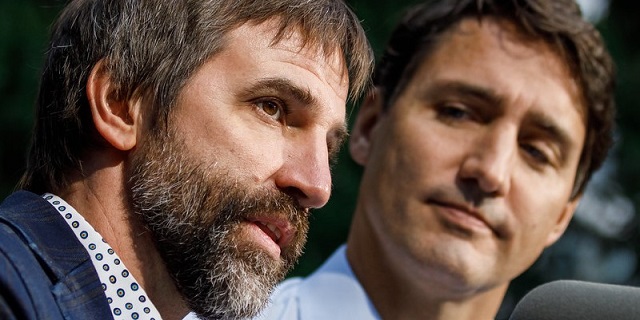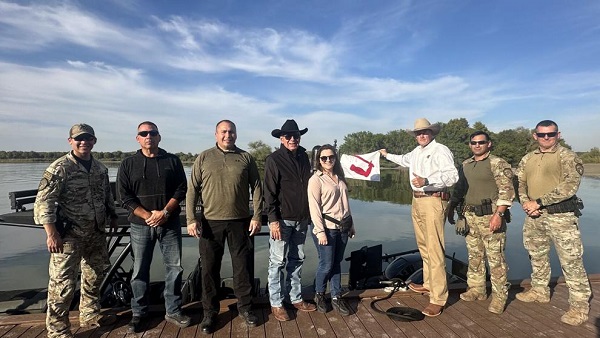Economy
Fixing the Trudeau – Guilbeault Policy Mess May Take Longer Than We’d Like – Here’s Why

From EnergyNow.ca
By Jim Warren
By spring 2024 it was pretty clear the Liberal government was headed for palliative care. A Leger poll on May 25 and an Abacus poll June 10 showed the Conservatives with a 20 point lead over the Liberals.
As the likelihood of their imminent defeat increased, the Trudeau Liberals stepped up the implementation of legislation and regulations inimical to the gas and petroleum industries. Their efforts in 2024 included legislation limiting freedom of speech for companies and individuals who publicize environmental progress in the oil and gas sector (aka Bill C-59). The speech-muzzling measure became law on June 21.
Around the same time, Environment and Climate Change Minister, Steven Guilbeault was busy shepherding two particularly ominous regulatory packages through to finalization. One set of regulations supported Canada’s Clean Electricity Regulations—intended to eliminate the use of coal and natural gas in the production of electricity with staged decommissioning deadlines between 2035 and 2050. The second package finalized the rules for the natural gas and oil industries emissions cap intended to restrict production and growth in those industries, to take effect in 2026.
The regulations weren’t finalized until the month before the House shut down for the holidays, just weeks before Justin Trudeau’s political career was put on life support.
The green policy stampede extended to the international stage. Never mind deficits and debt, the Liberals found plenty of cash to enhance their status as world class environmental luminaries.
At November’s COP29* conference at Baku, Azerbaijan, Guilbeault and Canada’s Ambassador for Climate Change (who knew we had one?), Catherine Stewart signed us on to 15 pledges to take action on fighting climate change. Around half of the promises were merely motherhood and apple pie statements, concessions to the environmentally woke who attend these sorts of international conferences.
But several of the commitments made on our behalf came with price tags. I’m still unclear on exactly which line item in a federal budget, legislative authority or policy statement authorized the spending.
Canada’s COP29 delegation launched the $2 billion GAIA project. Apparently we are cost sharing the project with Mitsubishi. The official government report on the conference doesn’t indicate how much of the $2 billion Canada is kicking in.
Canada also showcased its green bona fides by contributing to the effort to finance the green transition and climate change adaptation in poor countries—a task expected to require developed countries to collectively spend $110 billion to $300 billion per year by 2035. Our delegation announced Canada would lead by example, making a $1billion donation to the effort.
Guilbeault and Stewart gave $10 million to Conservation International’s “Limpopo Transfrontier Conservation Area” project. They “invested” another $2.5 million in the World Wildlife Fund’s “Building Resilient Communities through Marine Conservation in Madagascar” project.
Guilbeault may indeed be angling for that UN job I mentioned in my last EnergyNow column. Read it Here Canada made a $1.25 million payment directly to the office of UN Secretary General, António Guterres. The donation is supposed to assist Guterres in his efforts to encourage countries to get their “Nationally Determined Contributions” handed in on time.
In a podcast conversation with Jordan Peterson several months ago, Danielle Smith noted the accelerated pace of the Liberal government’s announcement and implementation of new environmental policies detrimental to Alberta’s oil and gas sectors and the economies of both Alberta and Canada.
Smith said one of the effects of enacting so many new environmental measures would be to make it extremely difficult for the next government to reverse them all in its first term. This probably was one of the reasons behind the rush to get so much done this past year.
Peterson added a psychological dimension to the discussion. He suggested Guilbeault and Trudeau were behaving like wounded narcissists. They were acting like egomaniacs who recognized their time in office was coming to an end and wanted to do as much as possible in the time they had left to pad their reputations as “do or die” climate warriors. They were striving to guarantee their legacies as planet-saving heroes.
They are probably both right. But Smith’s assessment speaks more directly to the practical challenges a new Conservative government will confront while trying to unwind the morass of legislation and regulations needlessly hampering the growth of environmentally responsible resource development in the west. It is an effort by the outgoing government to make their anti-oil legacy tamper proof.
Simply wading through the legislative quagmire and assessing where reform is most urgent and readily achievable will take time and effort. The wheels of parliament can turn slowly. No doubt some of the bureaucrats employed by the Liberals are true believers—frightened of the “impending climate apocalypse” and unlikely to expedite changes to environmental legislation and regulations. And, there could be multi-year contracts with consultants and other suppliers and long-term funding arrangements with companies and NGOs that will be difficult to unwind.
Let’s not forget the inevitable legal challenges that will threaten to hold up the reform process. Environmental groups and other special interests can be expected to use the courts to block efforts to reverse Liberal government policy. Ideally, the new government will cut off funding support for anti-oil environmental groups. Then at least supporters of the gas and petroleum sectors won’t be sued by activists funded with our tax dollars.
Then there are all the other important things governments are required to do and a limited amount of time to do them—drafting fiscally responsible budgets and dealing with the possibility of US tariffs on our exports come to mind as things near the top of the to-do list.
The highly anticipated Poilievre government may not be able to move as far and fast in reversing the Trudeau-Guilbeault legacy as we might like. They will face immense challenges and should be given a fair bit of slack if they can’t fix everything early in their first term.
*COP stands for Conference of the Parties to the United Nations Framework Convention on Climate Change (UNFCCC). The framework was adopted by the countries attending the UN sponsored Rio Earth Summit held at Rio de Janeiro, Brazil in 1992. The number in COP29 indicates it is the 29th annual post-Rio conference of the parties.
Business
Fuelled by federalism—America’s economically freest states come out on top

From the Fraser Institute
Do economic rivalries between Texas and California or New York and Florida feel like yet another sign that America has become hopelessly divided? There’s a bright side to their disagreements, and a new ranking of economic freedom across the states helps explain why.
As a popular bumper sticker among economists proclaims: “I heart federalism (for the natural experiments).” In a federal system, states have wide latitude to set priorities and to choose their own strategies to achieve them. It’s messy, but informative.
New York and California, along with other states like New Mexico, have long pursued a government-centric approach to economic policy. They tax a lot. They spend a lot. Their governments employ a large fraction of the workforce and set a high minimum wage.
They aren’t socialist by any means; most property is still in private hands. Consumers, workers and businesses still make most of their own decisions. But these states control more resources than other states do through taxes and regulation, so their governments play a larger role in economic life.
At the other end of the spectrum, New Hampshire, Tennessee, Florida and South Dakota allow citizens to make more of their own economic choices, keep more of their own money, and set more of their own terms of trade and work.
They aren’t free-market utopias; they impose plenty of regulatory burdens. But they are economically freer than other states.
These two groups have, in other words, been experimenting with different approaches to economic policy. Does one approach lead to higher incomes or faster growth? Greater economic equality or more upward mobility? What about other aspects of a good society like tolerance, generosity, or life satisfaction?
For two decades now, we’ve had a handy tool to assess these questions: The Fraser Institute’s annual “Economic Freedom of North America” index uses 10 variables in three broad areas—government spending, taxation, and labor regulation—to assess the degree of economic freedom in each of the 50 states and the territory of Puerto Rico, as well as in Canadian provinces and Mexican states.
It’s an objective measurement that allows economists to take stock of federalism’s natural experiments. Independent scholars have done just that, having now conducted over 250 studies using the index. With careful statistical analyses that control for the important differences among states—possibly confounding factors such as geography, climate, and historical development—the vast majority of these studies associate greater economic freedom with greater prosperity.
In fact, freedom’s payoffs are astounding.
States with high and increasing levels of economic freedom tend to see higher incomes, more entrepreneurial activity and more net in-migration. Their people tend to experience greater income mobility, and more income growth at both the top and bottom of the income distribution. They have less poverty, less homelessness and lower levels of food insecurity. People there even seem to be more philanthropic, more tolerant and more satisfied with their lives.
New Hampshire, Tennessee, and South Dakota topped the latest edition of the report while Puerto Rico, New Mexico, and New York rounded out the bottom. New Mexico displaced New York as the least economically free state in the union for the first time in 20 years, but it had always been near the bottom.
The bigger stories are the major movers. The last 10 years’ worth of available data show South Carolina, Ohio, Wisconsin, Idaho, Iowa and Utah moving up at least 10 places. Arizona, Virginia, Nebraska, and Maryland have all slid down 10 spots.
Over that same decade, those states that were among the freest 25 per cent on average saw their populations grow nearly 18 times faster than those in the bottom 25 per cent. Statewide personal income grew nine times as fast.
Economic freedom isn’t a panacea. Nor is it the only thing that matters. Geography, culture, and even luck can influence a state’s prosperity. But while policymakers can’t move mountains or rewrite cultures, they can look at the data, heed the lessons of our federalist experiment, and permit their citizens more economic freedom.
Business
The world is no longer buying a transition to “something else” without defining what that is

From Resource Works
Even Bill Gates has shifted his stance, acknowledging that renewables alone can’t sustain a modern energy system — a reality still driving decisions in Canada.
You know the world has shifted when the New York Times, long a pulpit for hydrocarbon shame, starts publishing passages like this:
“Changes in policy matter, but the shift is also guided by the practical lessons that companies, governments and societies have learned about the difficulties in shifting from a world that runs on fossil fuels to something else.”
For years, the Times and much of the English-language press clung to a comfortable catechism: 100 per cent renewables were just around the corner, the end of hydrocarbons was preordained, and anyone who pointed to physics or economics was treated as some combination of backward, compromised or dangerous. But now the evidence has grown too big to ignore.
Across Europe, the retreat to energy realism is unmistakable. TotalEnergies is spending €5.1 billion on gas-fired plants in Britain, Italy, France, Ireland and the Netherlands because wind and solar can’t meet demand on their own. Shell is walking away from marquee offshore wind projects because the economics do not work. Italy and Greece are fast-tracking new gas development after years of prohibitions. Europe is rediscovering what modern economies require: firm, dispatchable power and secure domestic supply.
Meanwhile, Canada continues to tell itself a different story — and British Columbia most of all.
A new Fraser Institute study from Jock Finlayson and Karen Graham uses Statistics Canada’s own environmental goods and services and clean-tech accounts to quantify what Canada’s “clean economy” actually is, not what political speeches claim it could be.
The numbers are clear:
- The clean economy is 3.0–3.6 per cent of GDP.
- It accounts for about 2 per cent of employment.
- It has grown, but not faster than the economy overall.
- And its two largest components are hydroelectricity and waste management — mature legacy sectors, not shiny new clean-tech champions.
Despite $158 billion in federal “green” spending since 2014, Canada’s clean economy has not become the unstoppable engine of prosperity that policymakers have promised. Finlayson and Graham’s analysis casts serious doubt on the explosive-growth scenarios embraced by many politicians and commentators.
What’s striking is how mainstream this realism has become. Even Bill Gates, whose philanthropic footprint helped popularize much of the early clean-tech optimism, now says bluntly that the world had “no chance” of hitting its climate targets on the backs of renewables alone. His message is simple: the system is too big, the physics too hard, and the intermittency problem too unforgiving. Wind and solar will grow, but without firm power — nuclear, natural gas with carbon management, next-generation grid technologies — the transition collapses under its own weight. When the world’s most influential climate philanthropist says the story we’ve been sold isn’t technically possible, it should give policymakers pause.
And this is where the British Columbia story becomes astonishing.
It would be one thing if the result was dramatic reductions in emissions. The provincial government remains locked into the CleanBC architecture despite a record of consistently missed targets.
Since the staunchest defenders of CleanBC are not much bothered by the lack of meaningful GHG reductions, a reasonable person is left wondering whether there is some other motivation. Meanwhile, Victoria’s own numbers a couple of years ago projected an annual GDP hit of courtesy CleanBC of roughly $11 billion.
But here is the part that would make any objective analyst blink: when I recently flagged my interest in presenting my research to the CleanBC review panel, I discovered that the “reviewers” were, in fact, two of the key architects of the very program being reviewed. They were effectively asked to judge their own work.
You can imagine what they told us.
What I saw in that room was not an evidence-driven assessment of performance. It was a high-handed, fact-light defence of an ideological commitment. When we presented data showing that doctrinaire renewables-only thinking was failing both the economy and the environment, the reception was dismissive and incurious. It was the opposite of what a serious policy review looks like.
Meanwhile our hydro-based electricity system is facing historic challenges: long term droughts, soaring demand, unanswered questions about how growth will be powered especially in the crucial Northwest BC region, and continuing insistence that providers of reliable and relatively clean natural gas are to be frustrated at every turn.
Elsewhere, the price of change increasingly includes being able to explain how you were going to accomplish the things that you promise.
And yes — in some places it will take time for the tide of energy unreality to recede. But that doesn’t mean we shouldn’t be improving our systems, reducing emissions, and investing in technologies that genuinely work. It simply means we must stop pretending politics can overrule physics.
Europe has learned this lesson the hard way. Global energy companies are reorganizing around a 50-50 world of firm natural gas and renewables — the model many experts have been signalling for years. Even the New York Times now describes this shift with a note of astonishment.
British Columbia, meanwhile, remains committed to its own storyline even as the ground shifts beneath it. This isn’t about who wins the argument — it’s about government staying locked on its most basic duty: safeguarding the incomes and stability of the families who depend on a functioning energy system.
Resource Works News
-

 Energy1 day ago
Energy1 day agoCanada’s future prosperity runs through the northwest coast
-

 Fly Straight - John Ivison2 days ago
Fly Straight - John Ivison2 days agoMPs who cross the floor are dishonourable members
-

 Business2 days ago
Business2 days agoThe world is no longer buying a transition to “something else” without defining what that is
-

 illegal immigration2 days ago
illegal immigration2 days agoEXCLUSIVE: Canadian groups, First Nation police support stronger border security
-

 Business2 days ago
Business2 days agoBrutal economic numbers need more course corrections from Ottawa
-

 International19 hours ago
International19 hours agoTyler Robinson shows no remorse in first court appearance for Kirk assassination
-

 Business12 hours ago
Business12 hours agoFuelled by federalism—America’s economically freest states come out on top
-

 illegal immigration19 hours ago
illegal immigration19 hours agoUS Notes 2.5 million illegals out and counting




